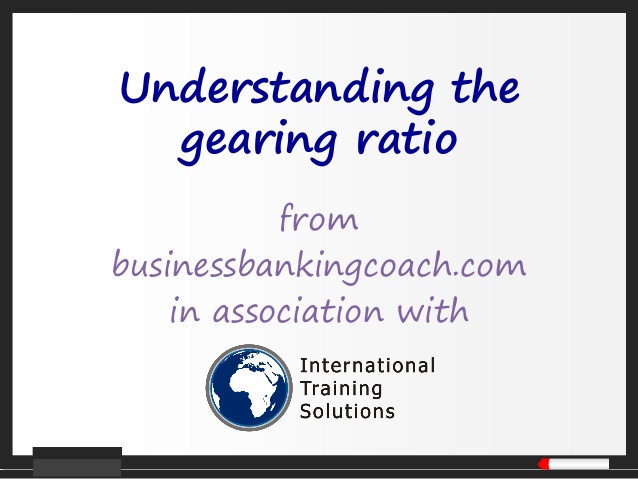Contents:


The advantages and disadvantages of preferred stock have changed little over the years. Most of them get issued by entrepreneurial startups today, following in the footsteps of the railroad and canal companies in the past. These shares are an option that has fallen out of favor in some circles, but it deserves a second look. Preferred stocks are a lot like bonds in the way they are structured in the marketplace today. Some of them have a specific maturity date, at which time the company redeems the asset for cash at a predetermined amount. Others may have a perpetual life that doesn’t have a termination date like common stock, remaining outstanding for as long as the firm remains in business.
Pros and Cons of Stock Buybacks – Investor Junkie
Pros and Cons of Stock Buybacks.
Posted: Mon, 22 Aug 2022 07:00:00 GMT [source]
However, keep in mind that common stocks are considered capital assets by the Internal Revenue Service. You’d pay taxes on your gains, effectively reducing your earnings. Learning how to avoid capital gains tax or reduce them might help you keep more of these gains in your pocket. They are more flexible than bonds because missing a dividend doesn’t cause the corporation to default. Also, when the company buys back callable preferred shares at a premium, the stockholders may get more than what they paid. Convertible preferred shares can be converted to common stock at predetermined terms.
Participating preferred share
The tradeoff for the lower levels of market risk with preferred stock versus common shares is that there is little movement in the equity value of the investment. Your return comes through the fixed dividends that occur when the organization is profitable. Although your value in the shares won’t necessarily decrease dramatically even with interest rate changes, it doesn’t increase in good times either.

Just when the party gets interesting, the issuing corporation might take away the punch bowl by calling the preferred shares. Our team members at Vested may own investments in some of the aforementioned companies/assets. Different types of investments involve varying degrees of risk, and there can be no assurance that any specific investment or strategy will be suitable or profitable for an investor’s portfolio. Investing in the stock market carries risk; the value of your investment can go up, or down, returning less than your original investment. Tax laws are subject to change and may vary depending on your circumstances. Common stock is a representation of ownership in a publicly-traded company.
Disadvantages of Preference Shares
Typically, preferred equity investments don’t come with voting rights. That means preferred equity shareholders don’t play a role in a company’s decision-making process and cannot participate in the election of the company’s board of directors. As with most investments, you can buy or sell participating preferred stocks through an investment professional. This means that, if the company liquidates, preferred shareholders usually receive their initial investment before common shareholders. Callable preferred share enables the company to call it at a specific date and a particular redemption price in the future. The redemption price may be slightly higher or equal to the original issue price.
Those are the companies that reward their investors with the most dividends. Most preferred stock owners receive a higher dividend rate than what people owning common stock earn with their investment. Make sure that you pay attention to the history of payments to see what to expect. Similarities include the fact that both assets are frequently at full price or par value. This value, which has nothing to do with the security’s market rate, is useful to predict new cash dividends. Then, firms might pay dividends, much like bonds do with coupon payments.
Participating Preferred Stock FAQs
Organizations have the right to issue a callable preferred stock. That means they retain the right to repurchase any outstanding shares at their discretion. That helps them to further reduce the cost of capital, although this issue is another disadvantage that investors must consider. The details of each preferred stock offering depend on the organization and the issues involved with ownership. It typically offers a higher yield, which can sometimes get paid on a monthly or quarterly basis.
If you hold for less than a year, then the short-term capital gains rate applies, which is equal to your top marginal income tax rate. Preferred shares, on the other hand, are a kind of debt/equity hybrid investment. They usually don’t have any voting rights and are issued with a stated dividend that typically doesn’t increase over time, which is similar to a fixed rate bond’s coupon. The biggest difference between common equity and preferred equity is that preferred equity shareholders get paid before common equity shareholders. So in a preferred equity structure, a company pays back all net profits or cash flow to its preferred investors until they receive a return on their investment .
It is a type of preferred share in which shareholders receive dividends before they are paid to ordinary shareholders, and are preferred over ordinary shares in the event of a liquidation. Bonds are usually the safest way to invest in public companies because, legally, shareholders must receive bond interest payments before the company could pay a dividend. If the company is in a liquidation, the bondholders will be paid off first if there is money left.
Is the Call Feature a Very Common Feature of Preferred Stock?
If you’re looking for https://1investing.in/, a high current yield, such as the SEC 30-day yield, is a must. Finance Strategists is a leading financial literacy non-profit organization priding itself on providing accurate and reliable financial information to millions of readers each year. Our team of reviewers are established professionals with decades of experience in areas of personal finance and hold many advanced degrees and certifications. At Finance Strategists, we partner with financial experts to ensure the accuracy of our financial content. More recently founders of hot tech startups have been pushing back and changing the dynamics of these investor-founder relationships with ‘supervoting stock’.
PGX: 5% Yield Without Paying A Premium – Seeking Alpha
PGX: 5% Yield Without Paying A Premium.
Posted: Tue, 29 Mar 2022 07:00:00 GMT [source]
Furthermore, it also has less potential for price appreciation than common stock. Some preferred stocks are convertibles, which means they can be exchanged into some common stock in certain circumstances. Common and preferred stock both represent a proportional share of ownership in a company, but you are entitled to different rights depending on which you invest in.
What Are the Advantages and Risks of Owning Preferred Stock?
But preferred shareholders can still often suffer a complete loss if the company runs out of assets by the time preferred shareholders are due to be paid. Participating preferred stock yields are generally higher than common stock equivalents, because they offer dividends that are paid before common shareholders receive any payouts. First, they offer a higher dividend yield than regular preferred stocks. This is because participating preferred shareholders have a higher priority when it comes to receiving dividends. At the end of the day, both preferred and common stocks are an investment security which comes with additional risks including investment risk, interest rate risk, and capital risk.

Corporations redeem compulsorily convertible preference shares for cash on their termination date or after their call date. Compulsorily convertible preference shares holders can convert to stock shares whenever profitable. If you’re craving some unusual investments to spice up your portfolio, you might want to consider trust preferred securities, or trups. They were once the darlings of the banking industry until Congress changed the rules on how they operate. While less popular today, you can still buy them, but you will benefit by first understand their unique risks. Failure to make timely payments of bond interest can force the court to declare bankruptcy and order the company’s liquidation.
While both accounting cycle and common stock are types of equity, there are important differences between them that can result in very different overall income, total return, and risk profiles over time. Which brings us to the most important differences between preferred and common stock. Here’s what investors need to know when deciding between these two types of equity investments. Such shareholders will always get the fixed dividend irrespective of the profit earned during the year. In contrast, other stockholders will get the dividend payment per the company’s profits.
As a general rule, the price of a T-bills moves inversely to changes in interest rates. For one, preferred shares often have a shorter maturity date than bonds. It’s also less risky than issuing bonds, as a company could face bankruptcy if it fails to meet a bond payment.
- An investor should judge the prevailing interest rate in the market and decide the correct preferred share to be purchased.
- Vested Finance Inc. and VF Securities Inc., along with Vested Services Private Limited, are wholly owned subsidiaries of Vested Holding Corp., referred herein as Vested Group.
- ABC Corporation has a series of outstanding participating preferred shares with a par value of $100.
If interest rates rise, usually due to expectations for higher inflation, then a bond’s price will decline so that its yield equals the prevailing yield on similar duration bonds. Profit MarginProfit Margin is a metric that the management, financial analysts, & investors use to measure the profitability of a business relative to its sales. It is determined as the ratio of Generated Profit Amount to the Generated Revenue Amount. Discover dividend stocks matching your investment objectives with our advanced screening tools. Preferred investments typically guarantee a dividend of a certain percentage of the share value.
This advantage applies whether it has a term or preferred life to it. When the company files for bankruptcy, then the valuation of the company takes place, and assets liquidate. Proceeds from the liquidation go to the preferred shareholders instead of the common shareholders. The proceeds left after payment to preferred shareholders will go through distribution among common shareholders.
